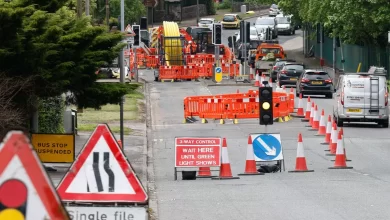Water in the basement is more than an inconvenience. It can be a sign of serious problems that, if left unaddressed, can lead to significant damage and health hazards. Any homeowner must understand the reasons behind basement flooding and take preventive measures.
This comprehensive guide will explore basement water accumulation’s four most common causes. By the end, you’ll have a solid grasp on how to keep your basement dry and your home safe.
1. Foundation Cracks – The Silent Invader
Foundation cracks are likely the most blamed culprit for basement water damage. They appear in various forms and sizes, and each one can act as a conduit for unwanted water.
Many factors cause these cracks, from shrinkage due to the curing concrete mix to lateral pressure on the walls. Their prevention and repair are vital for a dry basement.
Not all cracks are created equal. Some are natural parts of the concrete’s curing process and pose no threat. It’s important to identify the type of crack you’re dealing with.
2. Poor Drainage Systems – The Misdirected Flow
Your home’s drainage system is a critical defender against water intrusion. Yet, if it is not maintained or designed properly, it can become a source of problems rather than a solution. Gutter clogs, downspout disconnection, and improper grading can all contribute to water finding its way into your basement.
Gutters are the first line of defense against basement water. When they become clogged with leaves, debris, or ice, water can back up and overflow, pooling near the foundation. Regular gutter maintenance is crucial in preventing this situation.
3. Surface Water Leaks – The Demonstration Effect of Rain
One of the most visible signs of water intrusion is surface water entering the basement after heavy rain. It could state a high water table, poor exterior construction, or utility line leaks. Addressing these surface leaks is crucial for preventing short-term damage.
A high water table can put immense pressure on your foundation walls, leading to leaks and seepage. In severe cases, a sump pump and perimeter drainage system may be necessary to keep your basement dry. Yet, it is also vital to address the cause of the high water table, such as landscaping to improve surface drainage.
4. Condensation and Humidity – The Invisible Menace
Not all basement water issues result from external sources. Interior sources, such as:
- condensation
- high humidity levels
This can create a damp environment that fosters mold growth and undermines the integrity of your home. Proper airflow in your basement can cut condensation by preventing stagnant air and moisture buildup.
Various waterproofing paints and sealers are available to protect interior walls from small leaks and condensation. However, they only address symptoms, not the root causes, of basement water problems. Waterproofing is essential to avoid these hazards of water damage in basement.
Understanding the Common Causes of Water in the Basement
Preventing water in the basement requires a comprehensive approach that addresses exterior and interior factors. Regular maintenance of your home’s drainage system, vigilance for surface leaks, and proactive measures against humidity and condensation are just as crucial as repairing visible cracks.
With these insights and tips, you can tackle the challenge of basement water head-on. Remember, proactive prevention is the most effective and least costly approach to dealing with potential basement water issues. Invest in your home’s future by investing in a watertight basement today.
For more helpful tips, check out the rest of our site today!



